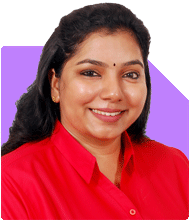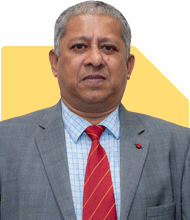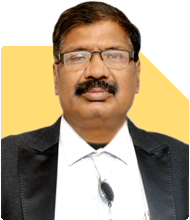Ramalingam Kalirajan |7438 Answers |Ask -Follow
Mutual Funds, Financial Planning Expert - Answered on Jun 03, 2024
He has an MBA in finance from the University of Madras and is a certified financial planner.
He is the director and chief financial planner at Holistic Investment, a Chennai-based firm that offers financial planning and wealth management advice.... more

Im 34 years old.. Have 35 lakhs in NPS, 27 lakhs in stocks, 8 lakhs in bonds and 22 lakhs in mutual fund.I have a rent yielding ancestral house. And 4 pieces of land.. I want to retire early, how do i go about..
You are 34 years old with a strong financial base. Your investments include Rs 35 lakhs in NPS, Rs 27 lakhs in stocks, Rs 8 lakhs in bonds, and Rs 22 lakhs in mutual funds. Additionally, you have a rent-yielding ancestral house and four pieces of land. Early retirement is a goal that requires careful planning and strategic investment.
First, commendations on your disciplined investment approach. Balancing diverse investments at your age is impressive. Your goal of early retirement shows foresight and ambition, which is admirable.
Setting Retirement Goals
Define your early retirement goals. Determine the age you wish to retire and estimate your annual expenses post-retirement. Consider inflation and lifestyle changes. Having a clear target helps in creating a precise plan.
Analysing Current Portfolio
Evaluate your current portfolio to understand its potential growth. Your investments in NPS, stocks, bonds, and mutual funds are well diversified, reducing risk and maximizing returns.
Growth Potential
Each asset class has different growth potentials:
NPS: Provides stable, long-term growth with tax benefits.
Stocks: High growth potential but with higher risk.
Bonds: Provide steady income with lower risk.
Mutual Funds: Diversified and professionally managed, offering balanced growth.
NPS Strategy
Continue contributing to your NPS. It’s a tax-efficient way to build a retirement corpus. NPS offers a mix of equity and debt exposure, providing balanced growth.
Equity Investments
Stocks have the potential for high returns. Diversify your stock portfolio across different sectors. Regularly review and adjust based on market performance.
Active Management
Actively managed funds can outperform index funds. Fund managers adapt to market conditions, aiming for higher returns. This professional management adds value to your investments.
Mutual Funds
Your mutual fund investments should be diversified. Consider funds with a strong track record. Regularly review performance and adjust allocations.
Regular vs. Direct Funds
Investing through regular funds with a Certified Financial Planner (CFP) offers several benefits. CFPs provide expert advice and continuous monitoring, helping in making informed decisions and optimizing returns.
Bond Investments
Bonds provide stability to your portfolio. They generate steady income and lower overall risk. Consider high-quality corporate or government bonds for better returns.
Real Estate
You have a rent-yielding ancestral house and four pieces of land. While real estate provides rental income and capital appreciation, focus on liquid assets for retirement planning.
Emergency Fund
Maintain an emergency fund to cover unexpected expenses. This fund should be easily accessible and separate from your retirement corpus. It ensures financial stability without disrupting your investment plan.
Debt Management
Ensure any existing debts are managed well. Paying off high-interest debts early can save significant amounts in interest and free up funds for investment.
Systematic Investment Plan (SIP)
SIPs in mutual funds help in averaging purchase costs and reducing market volatility impact. Consider increasing your SIP contributions periodically to boost your corpus.
Tax Planning
Efficient tax planning increases net returns. Utilize deductions under Section 80C, 80D, and other applicable sections. Minimize tax liabilities to maximize investable income.
Insurance
Adequate insurance coverage is essential. Life and health insurance protect against unforeseen events, safeguarding your financial plan.
Regular Portfolio Review
Regularly review your portfolio to ensure it aligns with your goals. Rebalance as needed to maintain the desired asset allocation. Adjust based on performance and changing market conditions.
Professional Guidance
Consulting a Certified Financial Planner (CFP) can provide personalized advice. CFPs help optimize your investment strategy, manage risks, and achieve financial goals. Their expertise can guide you in making informed decisions.
Increasing Investments
Consider increasing your investments as your income grows. Higher contributions can significantly impact your retirement corpus due to compounding.
Retirement Corpus Calculation
Calculate the required retirement corpus based on your goals. Factor in inflation, expected returns, and post-retirement expenses. Use this target to guide your investment strategy.
Risk Management
Identify and manage risks associated with your investments. Diversify to mitigate specific risks and maintain a balanced portfolio. Regular reviews help in adjusting to changing risk profiles.
Importance of Discipline
Stay disciplined in your investment approach. Avoid impulsive decisions based on short-term market fluctuations. Long-term consistency is key to achieving your retirement goals.
Conclusion
Your current financial standing is strong, and with strategic planning, early retirement is achievable. Diversify, manage risks, and seek professional guidance to optimize your investments. Regular reviews and disciplined investing will help you reach your goal.
Best Regards,
K. Ramalingam, MBA, CFP,
Chief Financial Planner,
www.holisticinvestment.in
You may like to see similar questions and answers below
Ramalingam Kalirajan |7438 Answers |Ask -Follow
Mutual Funds, Financial Planning Expert - Answered on May 19, 2024
Ramalingam Kalirajan |7438 Answers |Ask -Follow
Mutual Funds, Financial Planning Expert - Answered on May 22, 2024
Ramalingam Kalirajan |7438 Answers |Ask -Follow
Mutual Funds, Financial Planning Expert - Answered on Jul 12, 2024
Ramalingam Kalirajan |7438 Answers |Ask -Follow
Mutual Funds, Financial Planning Expert - Answered on Oct 18, 2024
Milind Vadjikar |832 Answers |Ask -Follow
Insurance, Stocks, MF, PF Expert - Answered on Jan 05, 2025
Ramalingam Kalirajan |7438 Answers |Ask -Follow
Mutual Funds, Financial Planning Expert - Answered on Jan 05, 2025
Ramalingam Kalirajan |7438 Answers |Ask -Follow
Mutual Funds, Financial Planning Expert - Answered on Jan 05, 2025
Milind Vadjikar |832 Answers |Ask -Follow
Insurance, Stocks, MF, PF Expert - Answered on Jan 05, 2025
Pushpa R |39 Answers |Ask -Follow
Yoga, Mindfulness Expert - Answered on Jan 05, 2025
Radheshyam Zanwar |1122 Answers |Ask -Follow
MHT-CET, IIT-JEE, NEET-UG Expert - Answered on Jan 05, 2025
Prof Suvasish Mukhopadhyay |274 Answers |Ask -Follow
Career Counsellor - Answered on Jan 04, 2025
Dr Nagarajan Jsk |197 Answers |Ask -Follow
NEET, Medical, Pharmacy Careers - Answered on Jan 04, 2025
Dr Dipankar Dutta |732 Answers |Ask -Follow
Tech Careers and Skill Development Expert - Answered on Jan 04, 2025
Rajesh Kumar Singh |27 Answers |Ask -Follow
IIT-JEE, GATE Expert - Answered on Jan 04, 2025











.jpg)
















